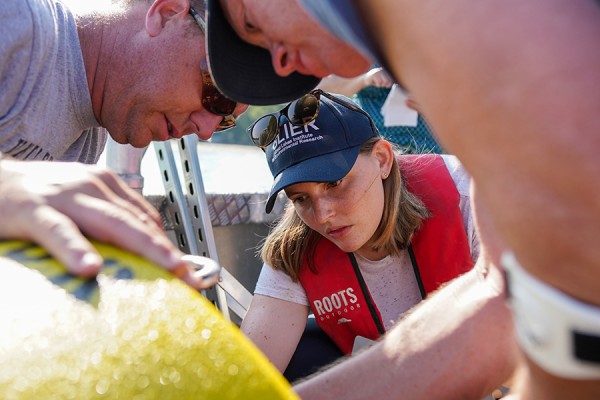Windsor Star – July 15, 2019
UWindsor researchers are helping the Town of LaSalle deal with flooding by installing high-tech equipment along the Detroit River shoreline to monitor water levels and wave action.
Solar-powered sensors were installed Wednesday near UWindsor’s Freshwater Restoration Ecology Centre adjacent to Gil Maure Park. Purchased with federal funding from the $17 million dollar investment in the Real-Time Aquatic Ecosystem Observation Network (RAEON) led by the University of Windsor, with additional emergency research funding through the Co-operative Institute for Great Lakes Research (CIGLR) at the University of Michigan and the US National Oceanic and Atmospheric Administration, the sensors collect data on what’s going on in the river, sending updates every five minutes.
Researchers and municipal employees can access the information using their smartphones, and will soon get automatic alerts when water levels surge.
“This is unique,” said UWindsor professor Trevor Pitcher. “It’s real-time information on all sorts of parameters that will be important for engineers in the town to assess their storm water systems so they can mitigate some of these issues related to flooding.”
Dr. Pitcher said he can envision the technology becoming the norm across Canada as cities deal with rising water levels associated with climate change.
All along shorelines in Windsor and throughout Essex County, docks, marinas, and waterfront roads and parks have been closed due to flooding. Pitcher said, in LaSalle, water levels along the shoreline are almost a metre higher than normal.
Wake from passing boats exacerbates the flooding by causing water to flow up onto waterfront properties, threatening homes. Municipalities like LaSalle and Windsor in recent days have sought to ban boats from motoring within 30 metres of shore.
LaSalle Mayor Marc Bondy said the new monitoring system is an example of the mutually beneficial relationship his town has with the University of Windsor. The town donated the land where Pitcher’s research centre is located.
“Dr. Pitcher and the relationship with the University is a great asset to us,” he said. “We’re thankful for this monitoring equipment.”
The sensors were assembled by LimnoTech, an environmental engineering and science firm based out of Ann Arbor, Mich., which provides expertise for RAEON. The sensors are housed in weather-proof metal jackets about the size of a tissue box mounted to brackets that extend over the water.
They are among $54,000 US worth of equipment installed in the Detroit River off LaSalle’s shore Wednesday. They are part of RAEON’s growing network of instruments across the Great Lakes, including five buoys in western Lake Erie that contribute to research on harmful algal blooms.
Aaron Fisk, a professor at UWindsor’s Great Lakes Institute for Environmental Research (GLIER) and science director of RAEON, captained the Research Vessel Haffner out into the channel between LaSalle and Fighting Island Wednesday with Pitcher and other researchers on board.
They deployed two bright yellow buoys, outfitted with solar panels and sensors to measure water temperature and wind, in the channel between LaSalle and Fighting Island. RAEON researchers attached extra sensors to the buoys to assess water quality. Those extra sensors measure turbidity (suspended particles affecting the clarity of water), chlorophyll (an indicator of algae populations), and dissolved oxygen (tiny bubbles of oxygen available to aquatic organisms for respiration).
The information the buoys will gather is unique and important to understanding changing ecosystems in the Great Lake, Dr. Fisk said.
─ Sarah Sacheli
